Living Bridge would join agreed Hercules plan over the Lea to connect Newham and Tower Hamlets
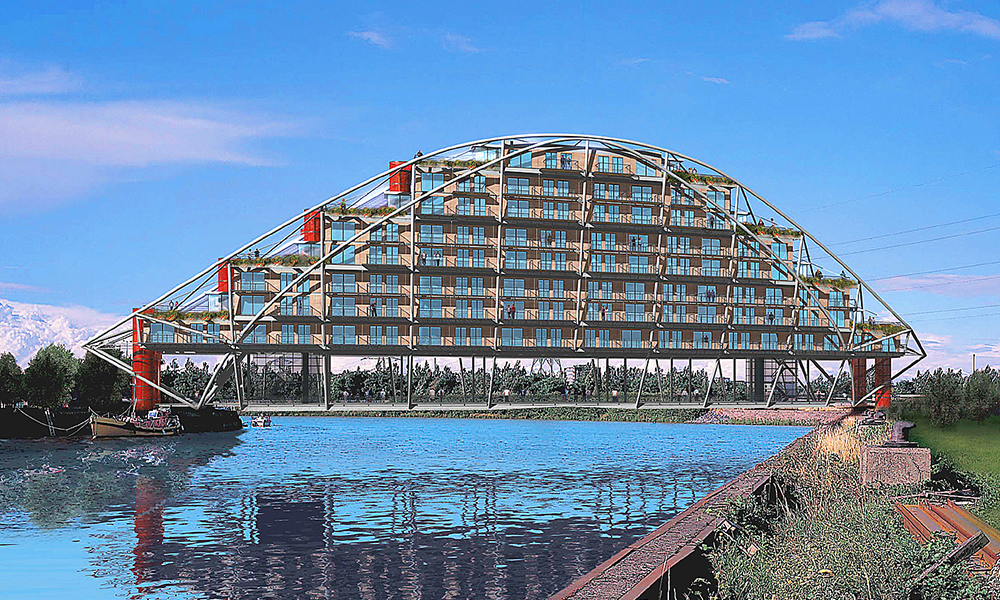
Subscribe to Wharf Life’s weekly newsletter here
It starts with an idea. The concept of people living on bridges isn’t new – they’ve been doing that for hundreds of years all over the world.
But Urban Space Management’s (USM) “aspirational” suggestion for a residential crossing at Trinity Buoy Wharf, spanning the mouth of the River Lea still feels a little bit visionary.
There’s something inherently attractive about inhabiting structures over water. Looking back, we have the historical romance of the Old London Bridge and the Ponte Vecchio in Florence, for example.
Flowing forward, there’s author William Gibson’s sci-fi vision of a jerry-built, self-governing shanty town clinging to the steel bones of San Francisco’s Bay Bridge.
This imaginary leap into a near future – where a ribbon of infrastructure is repurposed by a passionate, vibrant community of squatters, reacting to the pressures of insufficient housing and oppression – is a flash of what necessity and collaboration might be capable of. It’s counter-cultural, haphazard and seductive.
USM’s plan for a Living Bridge has something of both examples.
It’s a functional proposal – a connection to Royal Docks for pedestrians and cyclists that would ensure a flow of traffic through the existing site.
But it’s also the root of a future community, with around 70 properties suspended from the steel arch that would support the entire structure – brought to life in Cartwright Pickard’s illustrative designs.
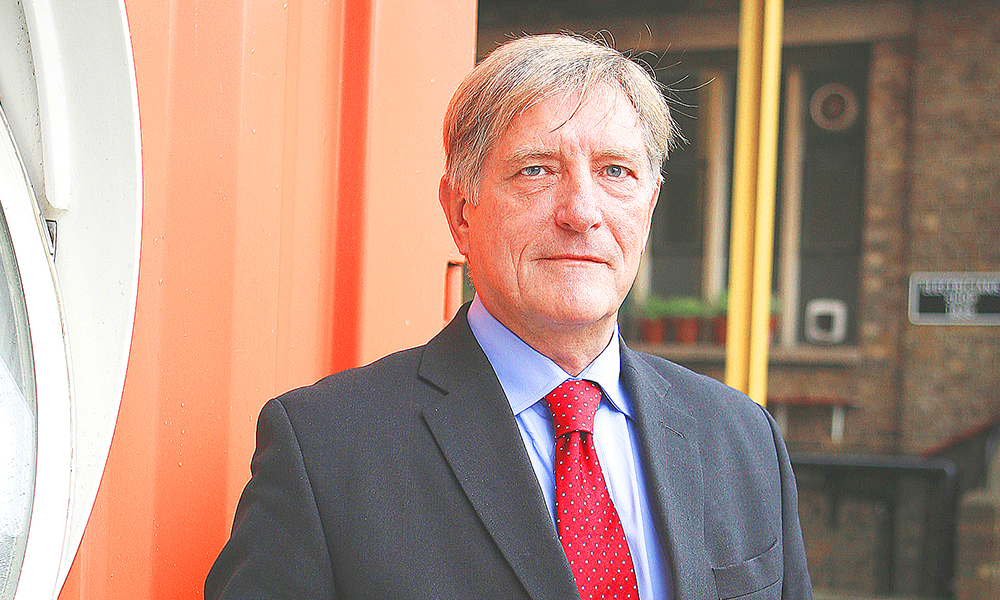
Access to the river would be preserved for taller vessels with a section of the bridge able to lift to allow safe passage.
Planning permission has already been granted for one crossing in the area – Hercules Bridge over the Lea on the northern edge of Ballymore’s Goodluck Hope development.
If built, this would connect to both a footpath towards Canning Town station as well as to the Lower Lea Crossing flyover for access to Royal Docks.
USM is currently gathering feedback on a range of ideas to improve connectivity in and around Trinity Buoy Wharf, with a consultation running until July 20, 2022.
Its plans aim to help overcome barriers such as roads, rivers and railways to make journeys that are complicated now, simpler in the future.
USM founding director Eric Reynolds said: “Right from the beginning, I thought the problem for this whole bit of London was that it is disconnected from itself in every way.
“Standing on the roof of the building that’s now occupied by Faraday Prep School at Trinity Buoy Wharf in the late 1990s, it was clear we should be doing something about this.
“Our outline planning application for the site allows us to build a bridge as a continuation of Orchard Place because it always seemed to me that the Lea should have more than a road bridge over it – there should also be something for pedestrians and cyclists.
“We should be connecting people, not just for us, but also for people living north and east of here – in Canning Town for example.
“They should see the river as part of their back or front garden, not something that’s just hidden away.”
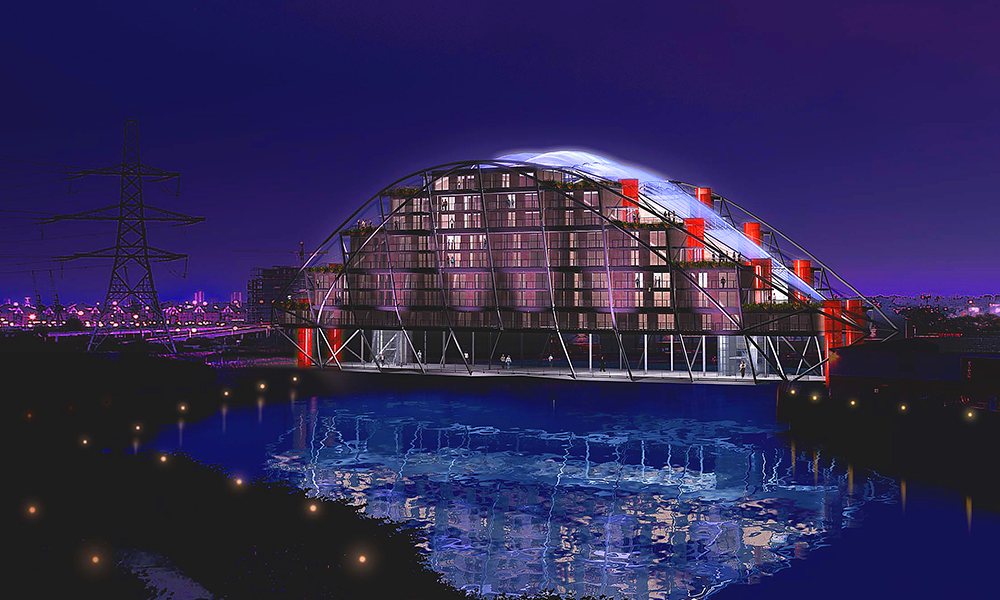
The case for a second bridge becomes increasingly clear when future development is taken into account.
The Thameside West scheme is expected to deliver some 5,000 new homes just across the river as well as a new DLR station, a school and industrial and creative workspaces.
“One of the things we did achieve years ago was to persuade the DLR planners to leave a straight bit of track on that land to allow potential for that station,” said Eric.
“It didn’t make sense then, but, with thousands of homes and a new town centre coming, it does now.
“Regarding the bridge – it may be that we put homes on it, we don’t know yet. We think there are two good reasons for doing it.
Firstly it creates new land and a new opportunity for a community.
“Secondly, in doing that, it offsets the cost of the bridge – so there’s an economic and a social argument.
“The Living Bridge would also be a big signpost to the importance and value of the River Lea, which was a vital part of the transport of this area – a line of power and industry – before it silted up. It deserves that recognition.
“Imagine coming up the Thames and seeing this out-of-scale bridge, all lit up with people living inside it.
“I really think it would appeal to Londoners – every building along the river is worked so as many properties as possible have views of the water.
“Here it would be right underneath – with no risk of anyone building in front of or behind you.”
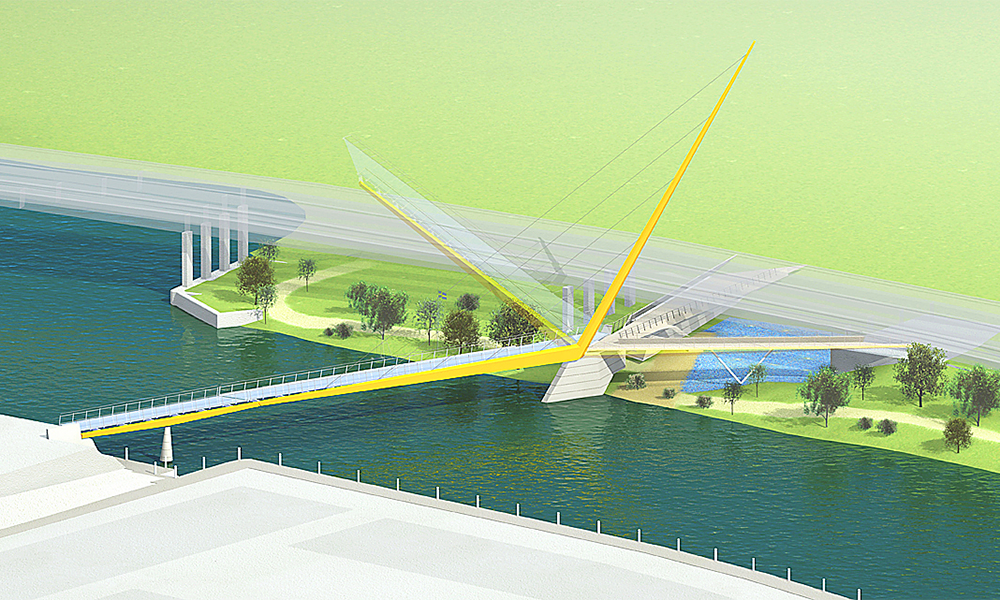
But does an area that is already connected to Canning Town via London City Island’s bridge and, potentially the already agreed Hercules Bridge really need another crossing?
“At the moment, the existing bridge takes you to the top of London City Island but we have an awful lot of walkers, dog owners, cyclists, hikers and so on who come to Trinity Buoy Wharf and would really like not to have to go back on themselves,” said Eric.
“The Hercules Bridge gives people the chance to do something different – to walk round the edge of the Lea and follow the river north.
“What the Living Bridge would do is to make it much easier to follow the Thames along the southern edge of Royal Docks as far as Barrier Park.
“It increases the potential for pedestrians and cyclists to reach these areas.
“It’s also in some ways an attempt to re-invent a community that was here in the past.
“There was a small fishing community and a school here, which was wiped away when local authorities decided that slum clearances were the thing to do.
“There also used to be a little ferry that took people across the Lea because the Thames Ironworks and Orchard Wharf needed to get their workers to work.
“During the Crossrail Works, the foundations for that ferry were found, so this has grown partly out of what we perceive as a respect for the past and an aspiration for the future.”
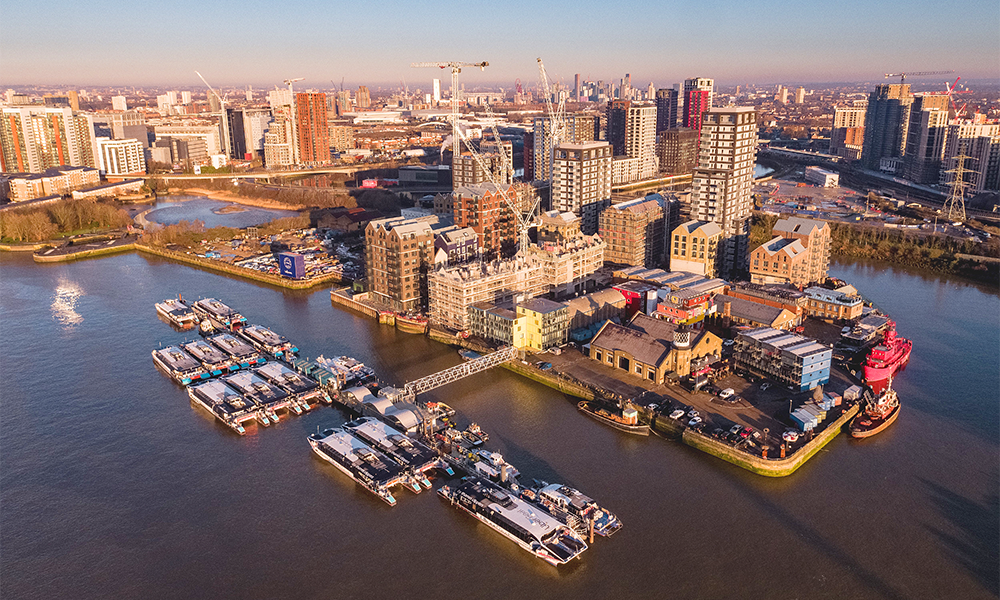
Read more: Genomics England set for relocation to Canary Wharf
Read Wharf Life’s e-edition here
Subscribe to Wharf Life’s weekly newsletter here
- Jon Massey is co-founder and editorial director of Wharf Life and writes about a wide range of subjects in Canary Wharf, Docklands and east London - contact via jon.massey@wharf-life.com




2 Replies to “Leamouth: How Trinity Buoy Wharf could combine a river crossing with flats”
Comments are closed.